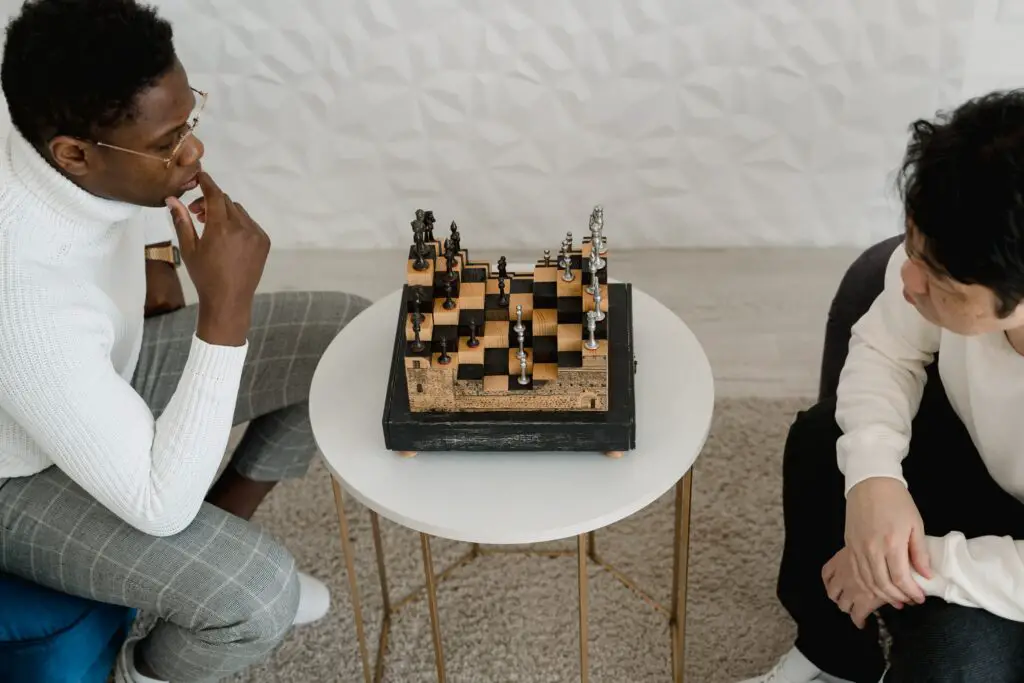
Is a Stalemate a Win? A chessboard, two minds in strategic combat, and a seemingly impasse situation. Is the result a win, a draw, or something in between? Welcome to the fascinating realm of chess stalemates, where the rules of the game can lead to unexpected outcomes that defy the conventional understanding of victory and defeat. In this article, we’ll dive into the heart of the matter and unveil the secrets behind the question: Is a stalemate a win?
The Dance of Kings and Queens: Understanding Stalemate
Contents
Before we delve into the question at hand, let’s ensure we’re on the same page regarding what a stalemate in chess actually is. A stalemate occurs when a player’s king is not in check, but they have no legal moves left to make. It’s a scenario where neither player can deliver a checkmate, leaving the game in a puzzling position.
Imagine two rival armies facing each other on the battlefield, each with their arsenal of moves and strategies. Suddenly, a moment arrives when one side realizes they’re trapped, unable to make any move that wouldn’t put their king in check. This intricate dance of kings and queens is what leads us to the heart of our debate.
Is Stalemate a Win or a Draw?
The question of whether a stalemate is a win or a draw has stirred debates among chess enthusiasts for ages. To find an answer, we need to consider the intentions behind the game of chess. In a traditional sense, victory is achieved by checkmating your opponent’s king, cornering it into a position where it cannot escape capture. But what happens when the rules themselves dictate that no legal moves are available, leaving the opponent’s king unthreatened?
Here’s where the twist lies. In chess, a stalemate is considered neither a win nor a loss. Instead, it’s a draw—a peaceful resolution where both sides acknowledge their inability to achieve checkmate. While it might not have the glory of a triumphant checkmate, a stalemate showcases the strategic prowess of both players and their ability to navigate complex scenarios.
For example, imagine a scenario where a skilled player, with their opponent’s king pushed to the edge of the board, executes a series of cunning moves that force their opponent’s pieces to block their own king’s movement. Although a traditional checkmate isn’t achieved, the result is a stalemate. This showcases how a seemingly unfavorable position can lead to an unexpected outcome that blurs the line between victory and draw.
The Art of Turning the Tables: When Stalemate Becomes a Strategy
Chess is a game of infinite possibilities, where even seemingly unfavorable situations can be turned into opportunities. Stalemates are no exception. Skilled players often use the threat of a stalemate to their advantage, coercing their opponents into making mistakes that lead to victory. This is where the line between a win and a draw blurs, and the beauty of chess strategy truly shines.
Imagine this scenario: A player, with their king backed against the wall, sees an opportunity to force a stalemate. They purposefully maneuver their pieces in a way that threatens to lead to a stalemate situation. Their opponent, fearing the potential draw, makes a risky move to break the stalemate threat. Unbeknownst to them, this move opens up their defenses, allowing the first player to execute a brilliant checkmate. The stalemate strategy becomes a smokescreen for a triumphant win.
A Twist in the Tale: Stalemate’s Impact on Novice Players
For novice players, the concept of a stalemate can be both baffling and enlightening. It’s a reminder that victory isn’t always about annihilating your opponent’s forces; sometimes, it’s about outsmarting them and capitalizing on their mistakes. A stalemate teaches us that even in the face of apparent defeat, there’s room for turning the tides and seizing the opportunity to emerge triumphant.

Pexels.com
Imagine the excitement of a young chess enthusiast who’s engaging in a tense match with a more experienced opponent. Just when it seems like defeat is inevitable, a sudden realization dawns—the potential for a stalemate. With newfound determination, they carefully navigate the pieces, employing a mixture of caution and audacity. And in the end, they achieve not a traditional checkmate, but a hard-earned stalemate—a draw that feels like a victory.
Conclusion
As we navigate the intricate landscapes of chess, we come to understand that victory isn’t always a clear-cut concept. The stalemate, with its enigmatic charm, challenges our perceptions of success and failure. It’s a testament to the intellectual depth of the game, where strategic brilliance can emerge from seemingly dire situations.
So, is a stalemate a win? While it might not fit the traditional mold of victory, it undoubtedly possesses the essence of triumph—a testament to the complexity and allure of chess. The next time you find yourself locked in a strategic showdown, remember that even in the absence of a checkmate, a stalemate can be a resounding victory in its own right.






